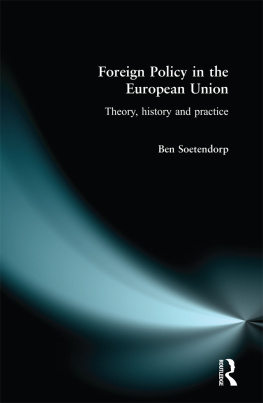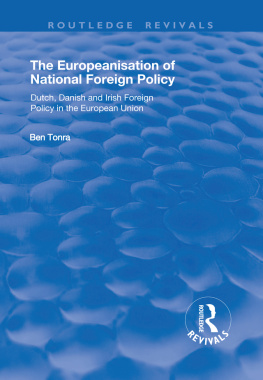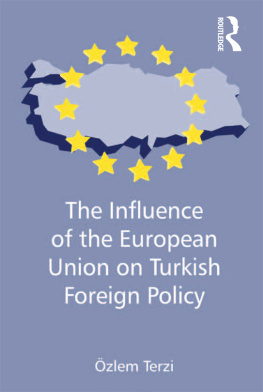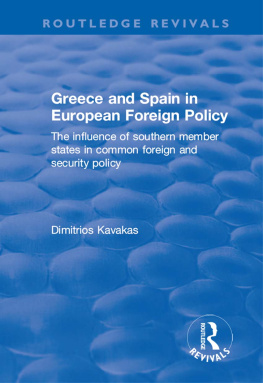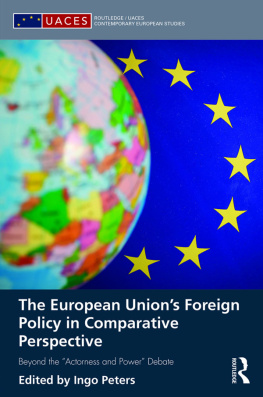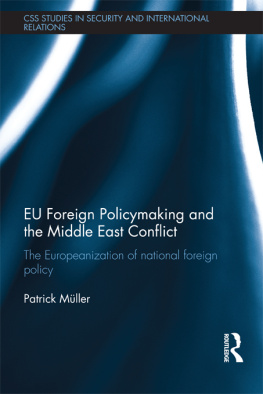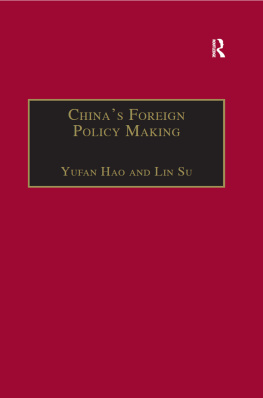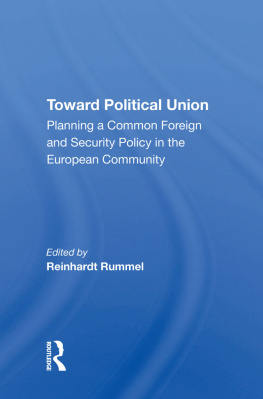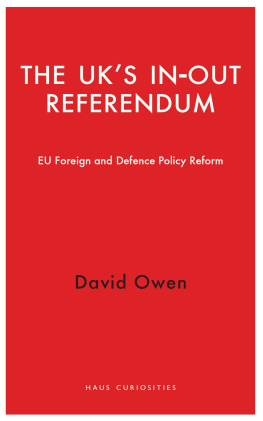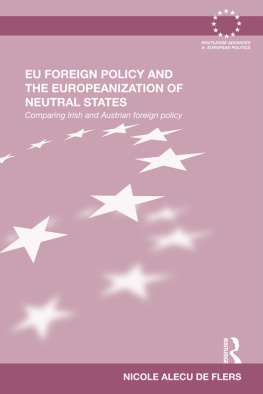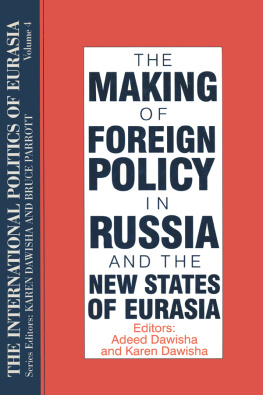First published 1999 by Pearson Education Limited
Published 2014 by Routledge
2 Park Square, Milton Park, Abingdon, Oxon OX14 4RN
711 Third Avenue, New York, NY 10017, USA
Routledge is an imprint of the Taylor & Francis Group, an informa business
Copyright 1999, Taylor & Francis.
The right of Ben Soetendorp to be identified as author of this Work has been asserted by him in accordance with the Copyright, Designs and Patents Act 1988.
All rights reserved. No part of this book may be reprinted or reproduced or utilised in any form or by any electronic, mechanical, or other means, now known or hereafter invented, including photocopying and recording, or in any information storage or retrieval system, without permission in writing from the publishers.
Notices
Knowledge and best practice in this field are constantly changing. As new research and experience broaden our understanding, changes in research methods, professional practices, or medical treatment may become necessary.
Practitioners and researchers must always rely on their own experience and knowledge in evaluating and using any information, methods, compounds, or experiments described herein. In using such information or methods they should be mindful of their own safety and the safety of others, including parties for whom they have a professional responsibility.
To the fullest extent of the law, neither the Publisher nor the authors, contributors, or editors, assume any liability for any injury and/or damage to persons or property as a matter of products liability, negligence or otherwise, or from any use or operation of any methods, products, instructions, or ideas contained in the material herein.
ISBN 13:978-0-582-32893-8 (pbk)
British Library Cataloguing-in-Publication Data
A catalogue record for this book is available from the British Library
Library of Congress Cataloging-in-Publication Data
Soetendorp, Ben, 1944
Foreign policy in the European Union: theory, history, and
practice / Ben Soetendorp.
p. cm.
Includes bibliographical references and index.
ISBN 0582328934 (ppr)
1. European Union countriesForeign relations. I. Title.
D1060.S6 1999
327.47dc21 9852187
CIP
Typeset by 35 in 10/12pt Times
In the process of European integration, the effort to create a single European foreign policy has a distinctive character. While the West European states were willing to make great leaps forward towards the building of an economic and monetary union with a single market and a single currency, less progress has been made so far in the foreign policy field. It looks as if foreign policy and especially security policy remain the last great bastion of state sovereignty and that the member-states still consider foreign policy making the reserved domain of the European nation-states. But the creation of an institutionalized framework for the making of a common foreign policy at the level of the European Union (EU) has made European foreign policy more than just the aggregation of fifteen national foreign policies. It has actually blurred the distinction between national foreign policies and a common European foreign policy. More and more foreign policy issues are treated as common foreign policies, binding national governments to the common decision taken, and making it harder for the member-states to pursue national foreign policies that are at odds with the other EU countries.
The aim of this book is to find out to what extent the individual member-states each with a different history, different interests and different styles of foreign policy making - still dominate the common foreign policy making in the EU, and how the common foreign policy making in the EU framework constrains the foreign policy behaviour of the individual member-states.
After a short introductory chapter the first part of the book reviews the diverse foreign policy patterns of the individual member-states towards European integration ( looks into the military dimension. This will help us to understand the reality of European foreign policy making, to comprehend the relationship between the foreign policies of the member-states of the EU and the foreign policy of the EU as a whole, to grasp its unique nature and to explore the prospects for developing a single European foreign policy.
Before proceeding it is important to make some observations about the term 'foreign policy'. To start with, foreign policy is defined in this book as the individual and the collective plans and actions of national governments oriented towards the external world (Rosenau, 1987: 3). It refers to the collection of goals, strategies and instruments, as well as the everyday actions selected by governmental policy makers (Rosati, 1993: 2). However, two remarks have to be made in this respect. First, as Northedge reminds us, it is useful to think of a government's policy more in terms of a government's position. 'Foreign policy represents an infinite sequence of positions on the daily flow of international issues reaching the Foreign Minister's desk' (Northedge, 1969: 28). Second, because many of the foreign policy decisions are taken in cooperation with other West European states, these positions, as William Wallace has claimed, are rather negotiating positions: 'decisions about desired decisions to guide its negotiators in the process of multilateral bargaining' (Wallace, 1975: 295).

